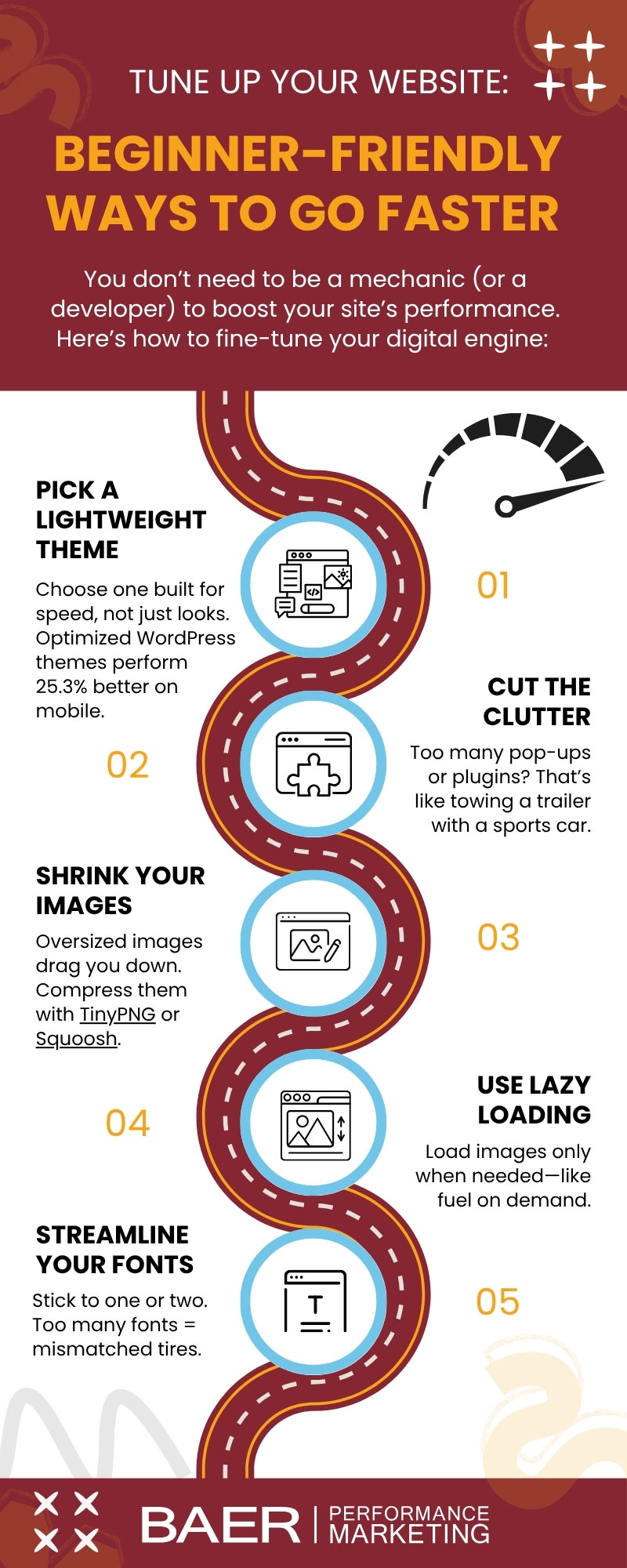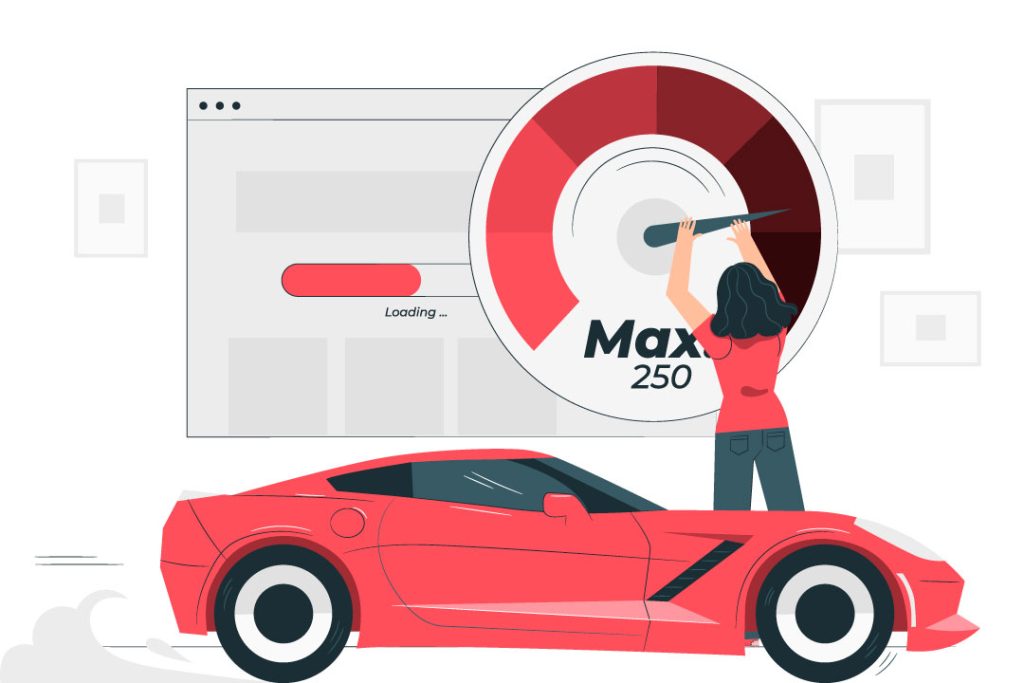
Your website is like a car. If it’s slow to start, stalls mid-journey, or can’t hit highway speeds, no one’s sticking around—let alone buying. In today’s digital world, speed isn’t a luxury—it’s the engine powering your success.

Under the hood: how speed impacts your bottom line
In short: If your site isn’t built for speed, you’re stuck in the slow lane while your competitors zoom past.
Before you hit the gas, check these essentials:
- Fast load times on desktop and mobile
- Easy-to-find main content
- Clear, uncluttered layout
- Optimized images
- Minimal flashy effects
- Protected user data (HTTPS)

Why speed wins the race (2025 edition)
- Faster sites fuel more sales: Even small improvements in load time can lead to noticeable increases in conversions. Think of it like shaving seconds off your lap time—it adds up fast.
- Delays cost you leads: Every second your site hesitates, you risk losing potential customers. A slow start can stall your entire race.
- Speed boosts visibility: Google’s latest updates reward fast, user-friendly websites with better rankings. Search engines want to send users to the smoothest ride.
- Mobile users expect instant performance: With mobile traffic dominating the web, a slow mobile site is like racing with a flat tire. Speed keeps you in the lead.
- Accessibility improves with speed: Fast-loading sites work better for users on older devices or slower networks. Everyone deserves a smooth ride, no matter their gear.
- Marketers are prioritizing performance: In 2025, traffic growth and user experience are top goals for digital teams. Speed supports both—like tuning your engine and upgrading your tires.

Navigating the AI lane shift
Google’s new AI Overviews are changing the SEO road map. These smart summaries show up at the top of search results, giving users quick answers—often without clicking a single link.
What that means for your site:
- Fewer clicks: Some sites are seeing traffic drop by up to 60%.
- More zero-click searches: Users get what they need without visiting your page.
- Tougher competition: AI pulls from multiple sources—only the best content gets featured.
So how do you stay in the race?
To keep your site visible (and clickable), your content needs to be AI-aware but human-first. That means:
- Structuring your content like a well-tuned dashboard—clear, scannable, and easy to navigate
- Sharing original insights, stories, or data that AI can’t just repackage
- Using schema markup, also known as structured data, to help Google understand your content’s structure
- Building brand authority so users recognize your name—even in a sea of AI summaries
In short: if your site is just another sedan in a crowded search lane, AI Overviews are the self-driving Teslas zipping past. But with the right strategy, you can still take the lead.
Speed check: Is your site a Ferrari or a Ford Fiesta?
Not sure how your site stacks up? Don’t guess—test it. These tools are like taking your site for a test lap to see how it handles:
- Google PageSpeed Insights – Gives you a full performance report and improvement tips
- GTmetrix – Combines Google and Lighthouse data for a full tune-up
- WebPageTest.org – Advanced testing from different locations and devices
Pop your URL into one or two of these tools—you might be surprised by what’s under the hood.
Ready to leave the competition in the dust?
Designing for speed isn’t just a tech job—it’s a design mindset. Just like a high-performance car, your website should be built for speed, efficiency, and a smooth ride. With the right tweaks, you can go from sluggish to supercharged.
If your website is crawling instead of cruising, let Baer Performance Marketing give it a full diagnostic. Head to the Baer Performance Marketing homepage and use our free “Analyze My Website” tool. It scans your site for SEO, speed, and user experience issues. Then we’ll schedule a one-on-one meeting to walk you through the results and map out a plan to improve.










































































